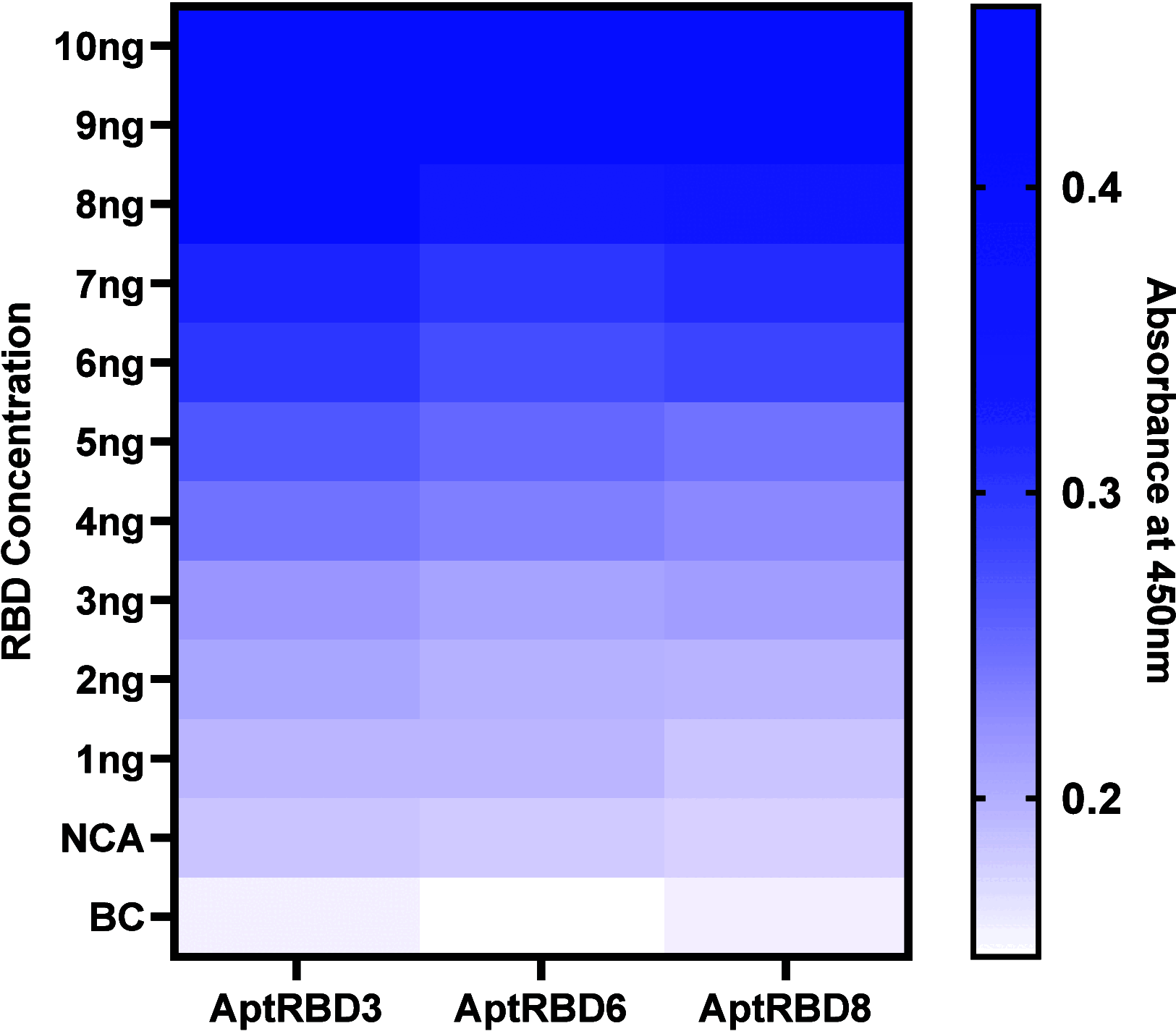Development of Novel ssDNA Aptamers for Detection of Receptor-Binding Domain of SARS-COV‑2
- PMID: 40547623
- PMCID: PMC12177630
- DOI: 10.1021/acsomega.4c03580
Development of Novel ssDNA Aptamers for Detection of Receptor-Binding Domain of SARS-COV‑2
Abstract
The highly virulent and transmissible SARS-CoV-2 causes COVID-19 and poses a global public health threat. Herein cloned, expressed, and the molecular weight of the receptor-binding domain (RBD) of the SARS-CoV-2 gene encoding protein was confirmed by SDS-PAGE electrophoresis and Western blot analysis. The pivotal aim is to develop single-stranded DNA (ssDNA) aptamers for the rapid detection of SARS-COV-2 infections in humans. In this investigation, a library of nine novel ssDNA aptamers was developed by several rounds of systematic evolution of ligands by an exponential enrichment approach and assessed by an enzyme-linked aptamer assay for binding affinity against RBD antigen (Ag). An in vitro assay resulted in a varied colorimetric signal that depends on the nature of aptamer. Quantitative determination of AptRBD3, AptRBD6, and AptRBD8 aptamers exhibited excellent binding affinity against Ag in the range of 5-10 ng/mL. The putative AptRBD3, AptRBD6, and AptRBD8 aptamers were converted into peptide sequences and docked against RBD, exhibiting good binding energy of -6.8, -6.3, and -7.1 kcal/mol respectively, which were recorded. Furthermore, docking studies of ssDNA aptamers were performed using HDOCK web server to ascertain the binding mechanism and docking score perceived as -389.74, -404.28, and -390.37. Despite this, we engineered a high-affinity AptRBD3.3 aptamer that formed a single and bulged loop, which improved binding affinity, resulted in a docking score of -361.56, and exhibited sensitivity at 4 ng of Ag of SARS-CoV-2. Moreover, computational modeling of AptRBD3.3 revealed an intriguing significant binding affinity with the RBD mutant SARS-CoV-2 S-UK variant (PDB ID: 7EDG) with a docking score of -350.21. In conclusion, the AptRBD3.3 aptamer can be used for the development of lateral flow device and electrochemical sensors for rapid, low-cost, and accurate detection of COVID-19 infection in humans for point of care diagnostics.
© 2025 The Authors. Published by American Chemical Society.
Figures










References
-
- Koteswara Rao, V. Point of Care Diagnostic Devices for Rapid Detection of Novel Coronavirus (SARS-nCoV19) Pandemic: A Review. Frontiers in Nanotechnology 2021, 2. 10.3389/fnano.2020.593619. - DOI
-
- Svobodova M., Skouridou V., Jauset-Rubio M., Viéitez I., Fernández-Villar A., Cabrera Alvargonzalez J. J., Poveda E., Bofill C. B., Sans T., Bashammakh A., Alyoubi A. O., O’Sullivan C. K.. Aptamer Sandwich Assay for the Detection of SARS-CoV-2 Spike Protein Antigen. ACS Omega. 2021;6(51):35657–35666. doi: 10.1021/acsomega.1c05521. - DOI - PMC - PubMed
LinkOut - more resources
Full Text Sources
Miscellaneous
